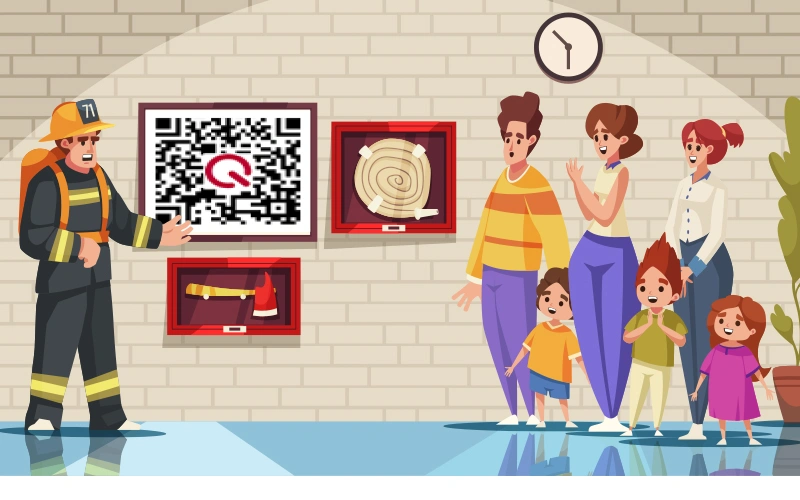
QR Codes for Safety and Emergency Information: A Life-Saving Innovation
In critical moments, quick access to vital information can mean the difference between chaos and effective action. QR codes have emerged as a powerful tool for improving safety, streamlining emergency response, and ensuring timely access to essential details.
Key Benefits of QR Codes in Emergency Situations
- Instant Access to Information
- QR codes can store critical details like medical history, allergies, and emergency contacts, which first responders can retrieve instantly with a quick scan.
- Enhanced Emergency Communication
- QR codes simplify the process of sharing safety instructions, escape routes, and incident reports, ensuring clear and timely communication.
- Support for Diverse Communities
- Multilingual QR codes make safety information accessible to people from different linguistic backgrounds, fostering inclusivity during emergencies.
- Streamlined Processes
- QR codes enable faster incident reporting and data sharing, reducing delays and improving overall crisis management efficiency.
- Adaptability Across Platforms
- QR codes can be integrated into ID cards, wearable devices, and stickers, making them versatile tools for various emergency preparedness strategies.
Real-World Applications of QR Codes for Safety
Medical History and Emergency Contacts
- QR codes embedded in ID cards or wearable devices allow first responders to access patient information, such as pre-existing conditions and medications, without delay.
- Emergency contact details stored in QR codes ensure that family members can be quickly notified.
Escape Route Maps
- Placed at strategic locations, QR codes provide interactive escape maps that guide occupants to safety during building evacuations.
- These codes can include real-time updates on blocked or dangerous routes.
How-To Videos for Crisis Situations
- QR codes can link to instructional videos on performing CPR, using fire extinguishers, or managing other emergencies.
- Such resources can empower bystanders to act decisively before professional help arrives.
Innovative Implementations
Wearable QR Codes
- On Wristbands: Ideal for children, elderly individuals, or those with medical conditions.
- On Phones: Lock screens displaying QR codes ensure quick scanning by responders.
- On Nails or Jewelry: Small, discreet QR codes that are always on-hand.
QR Code Stickers
- Stickers on helmets, backpacks, or vehicles provide quick access to safety protocols or contact information.
- In industrial settings, QR stickers can link to hazard reports or equipment manuals.
QR Code-Inducted IDs
- Digital IDs with QR codes store comprehensive safety profiles, including vaccination records and travel safety guidelines.
- These IDs are particularly useful for disaster response teams and frequent travelers.
Best Practices for Implementing QR Codes
- Ensure Scannability
- Use high-contrast designs and test codes across various devices to guarantee functionality.
- Provide Multilingual Options
- Include translations for diverse audiences to ensure accessibility during crises.
- Secure Sensitive Information
- Protect QR code data with encryption to prevent unauthorized access.
- Train Users
- Educate the public on how to utilize QR codes effectively for safety purposes.
Conclusion
QR codes are revolutionizing the way we handle safety and emergency situations. By offering quick access to critical information and streamlining communication, these codes empower individuals and responders to act with confidence and efficiency.
Are you ready to integrate QR codes into your emergency preparedness plans? Explore solutions tailored to your needs and take a proactive step toward enhancing safety for your community.